Presentations by Meadow Campbell
M e a d o w C a m p b e l l B r o wn B a g p r e s e n t a t i o n t o f u l f i l l C a n d i d ... more M e a d o w C a m p b e l l B r o wn B a g p r e s e n t a t i o n t o f u l f i l l C a n d i d a c y r e q u i r e m e n t s A u g u s t 2 0 , 2 0 1 2 C o m m i t t e e : D r s . R o b C o r r u c c i n i ( C h a i r ) , S u s a n F o r d , B r i a n B u t l e r, G r e t c h e n D a b b s , P e e r M o o r e -J a n s e n , B e n A u e r b a c h
Thesis Chapters by Meadow Campbell
sometimes not so difficult) concepts as many times as required and provided a sturdy sounding boa... more sometimes not so difficult) concepts as many times as required and provided a sturdy sounding board for all my ideas. His guidance on simply how to write (which I only thought I had a grasp on), and on how to conduct and report responsible and meaningful research is so appreciated.
Papers by Meadow Campbell
Cureus
During routine dissection of the superficial face in an 81-year-old male cadaver, an unusually la... more During routine dissection of the superficial face in an 81-year-old male cadaver, an unusually large caliber transverse facial artery (TFA) was observed bilaterally. Further dissection revealed the presence of a hypoplastic facial artery (FA) that passed deep to depressor anguli oris and gave off the inferior labial artery. Bilaterally, the TFA gave rise to the superior labial artery, lateral nasal artery, and ended as the angular artery. Anastomosis of the branches of the TFA, FA, and infraorbital artery was noticed at the buccal area. To our knowledge, there are no previous reports of this anatomical variation. Documentation of variations in the arterial supply of the face will be helpful in further minimizing complications during facial surgery and cosmetic procedures.

The FASEB Journal, 2014
Our advanced dissection techniques course is designed for 4th-year students to review and gain mo... more Our advanced dissection techniques course is designed for 4th-year students to review and gain more advanced anatomy training especially for students embarking on “anatomy-intense” residency programs such as surgery, physiatry, obstetrics & gynecology, urology and radiology. The duration of the electives are typically two weeks and they are specifically tailored to the students interests. The dissections conducted by the 4th-year students are structured and targeted and not all inclusive as were the dissections performed during their first year of medical school. The elective dissections are designed to introduce new approaches, angles, and ways to see relationships between anatomical structures. These dissections, and expositions by the senior students, are also used to supplement the learning of anatomy for our first year students. The opportunity for first-year students to see specialized anatomy, as presented in the electives, provides a unique exposure otherwise unavailable during the first year....

" Directional asymmetry is minimal in the lower limbs of humans: it is slightly left-biased ... more " Directional asymmetry is minimal in the lower limbs of humans: it is slightly left-biased and exhibits cross-symmetry with the more asymmetric upper limb. In addition, it has also been demonstrated that the sacrum exhibits left-biased asymmetry in its alar dimensions. Given this precedent, though some asymmetry may be present in pelvic dimensions, it would be anticipated that this would be minimized by developmental constraints imposed by locomotor efficiency and, in females, obstetric sufficiency. This study explores directional asymmetry in pelvic dimensions among seven archaeological North American indigenous groups. Individuals were placed into two broad age classes for comparison in order to assess asymmetry and mortality. Measurements were taken on bilateral dimensions related to obstetrics. In addition, we measured femoral dimensions with documented patterns of asymmetry in human populations. Measurement error was assessed to be low (<2%) for all measurements. Results show no sexual dimorphism in any observed asymmetries, matching previous findings. No significant correlations (or greater than ρ = 0.25) between femoral and pelvic dimension asymmetries were found. Nonparametric analyses further demonstrate no significant directional asymmetry in any dimensions with the notable exception for pubic length, which has a significant right bias. Further analysis demonstrates the right bias is found in young individuals and is greater in females, who also show a right bias in a proxy for sacrospinous ligament length. Older individuals exhibit small (<1%) asymmetries that are more likely the result of fluctuating asymmetry. Though preliminary, this implies possible associations between obstetric dimension asymmetry and younger female mortality."

The FASEB Journal, 2014
Our advanced dissection techniques course is designed for 4th-year students to review and gain mo... more Our advanced dissection techniques course is designed for 4th-year students to review and gain more advanced anatomy training especially for students embarking on “anatomy-intense” residency programs such as surgery, physiatry, obstetrics & gynecology, urology and radiology. The duration of the electives are typically two weeks and they are specifically tailored to the students interests. The dissections conducted by the 4th-year students are structured and targeted and not all inclusive as were the dissections performed during their first year of medical school. The elective dissections are designed to introduce new approaches, angles, and ways to see relationships between anatomical structures. These dissections, and expositions by the senior students, are also used to supplement the learning of anatomy for our first year students. The opportunity for first-year students to see specialized anatomy, as presented in the electives, provides a unique exposure otherwise unavailable during the first year....

Variation in occlusopalatal skeletal development has been linked to multiple factors including th... more Variation in occlusopalatal skeletal development has been linked to multiple factors including the functional demands placed on these elements during ontogeny. Previous research indicates strong relationships between dietary consistency (soft versus hard foods) and variation in dental occlusion and palate shape. Our previous research indicated shorter and more variable palates among savanna baboons fed soft foods, but the relative position of the palate and other details of the variation in shape remain unclear. To help clarify this issue, we collected 3D landmark data to test the hypothesis that among savanna baboons a softer diet results in a palate that is shorter and more variable in its position. Here, we examined 20 landmarks from the palate, basicranium, and face in two samples of savanna baboons fed diets with different dietary consistencies (n=49). To explore variation in landmark position, we performed principal component analysis on Procrustes transf ormed coordinates. Results indicate that the greatest variation between groups exists in the positions of basion, hormion, and nasion, rather than in the position of the palatal landmarks themselves. Angles representing degrees of flexion at these locations were also found to be significantly different between groups. The position of these landmarks suggests less basicranial flexion around the naso- and oropharynx in the soft diet sample, with this group having more anteriorly located palates relative to the basicranium and airways that are flattened relative to the Frankfurt plane. The functional and taxonomic implications of these findings are discussed.

" Directional asymmetry is minimal in the lower limbs of humans: it is slightly left-biased ... more " Directional asymmetry is minimal in the lower limbs of humans: it is slightly left-biased and exhibits cross-symmetry with the more asymmetric upper limb. In addition, it has also been demonstrated that the sacrum exhibits left-biased asymmetry in its alar dimensions. Given this precedent, though some asymmetry may be present in pelvic dimensions, it would be anticipated that this would be minimized by developmental constraints imposed by locomotor efficiency and, in females, obstetric sufficiency. This study explores directional asymmetry in pelvic dimensions among seven archaeological North American indigenous groups. Individuals were placed into two broad age classes for comparison in order to assess asymmetry and mortality. Measurements were taken on bilateral dimensions related to obstetrics. In addition, we measured femoral dimensions with documented patterns of asymmetry in human populations. Measurement error was assessed to be low (<2%) for all measurements. Results show no sexual dimorphism in any observed asymmetries, matching previous findings. No significant correlations (or greater than ρ = 0.25) between femoral and pelvic dimension asymmetries were found. Nonparametric analyses further demonstrate no significant directional asymmetry in any dimensions with the notable exception for pubic length, which has a significant right bias. Further analysis demonstrates the right bias is found in young individuals and is greater in females, who also show a right bias in a proxy for sacrospinous ligament length. Older individuals exhibit small (<1%) asymmetries that are more likely the result of fluctuating asymmetry. Though preliminary, this implies possible associations between obstetric dimension asymmetry and younger female mortality."

Variation in occlusopalatal skeletal development has been linked to multiple factors including th... more Variation in occlusopalatal skeletal development has been linked to multiple factors including the functional demands placed on these elements during ontogeny. Previous research indicates strong relationships between dietary consistency (soft versus hard foods) and variation in dental occlusion and palate shape. Our previous research indicated shorter and more variable palates among savanna baboons fed soft foods, but the relative position of the palate and other details of the variation in shape remain unclear. To help clarify this issue, we collected 3D landmark data to test the hypothesis that among savanna baboons a softer diet results in a palate that is shorter and more variable in its position. Here, we examined 20 landmarks from the palate, basicranium, and face in two samples of savanna baboons fed diets with different dietary consistencies (n=49). To explore variation in landmark position, we performed principal component analysis on Procrustes transf ormed coordinates. Results indicate that the greatest variation between groups exists in the positions of basion, hormion, and nasion, rather than in the position of the palatal landmarks themselves. Angles representing degrees of flexion at these locations were also found to be significantly different between groups. The position of these landmarks suggests less basicranial flexion around the naso- and oropharynx in the soft diet sample, with this group having more anteriorly located palates relative to the basicranium and airways that are flattened relative to the Frankfurt plane. The functional and taxonomic implications of these findings are discussed.

This dissertation used osteometrics to assess the level of congruence between biological distance... more This dissertation used osteometrics to assess the level of congruence between biological distance and long-distance material exchange in three Middle and Late Archaic groups living in the mid-South United States. Dental and cranial data support greater biological affinity between groups in southern Illinois (represented by individuals from the Black Earth site) and central Tennessee (individuals from Eva and surrounding sites) while groups in the Green River region of western Kentucky (Shell Mound Archaic) were somewhat more removed or perhaps more isolated. Females were more biologically variable than males for the majority of metrics used. This finding is suggestive of a patrilocal residence pattern, if only loosely followed. ii ACKNOWLEDGMENTS This dissertation would not have been possible without the support of many people. My committee co-chairs, Drs. Robert Corruccini and Susan Ford, provided guidance, insight, support, and meaningful suggestions. Their mentorship is reflected beyond the pages written here as they are both excellent role models in life and scholarship. Other committee members,

This dissertation used osteometrics to assess the level of congruence between biological distance... more This dissertation used osteometrics to assess the level of congruence between biological distance and long-distance material exchange in three Middle and Late Archaic groups living in the mid-South United States. Dental and cranial data support greater biological affinity between groups in southern Illinois (represented by individuals from the Black Earth site) and central Tennessee (individuals from Eva and surrounding sites) while groups in the Green River region of western Kentucky (Shell Mound Archaic) were somewhat more removed or perhaps more isolated. Females were more biologically variable than males for the majority of metrics used. This finding is suggestive of a patrilocal residence pattern, if only loosely followed. ii ACKNOWLEDGMENTS This dissertation would not have been possible without the support of many people. My committee co-chairs, Drs. Robert Corruccini and Susan Ford, provided guidance, insight, support, and meaningful suggestions. Their mentorship is reflected beyond the pages written here as they are both excellent role models in life and scholarship. Other committee members,

MEADOW L. CAMPBELL1 and RYAN M. CAMPBELL2 1Basic Science, Logan College of Chiropractic, 2Center ... more MEADOW L. CAMPBELL1 and RYAN M. CAMPBELL2 1Basic Science, Logan College of Chiropractic, 2Center for Archaeological Investigations, Southern Illinois University Carbondale Burial Patterning and Biological Distance at the Black Earth Site (11-Sa-87): Implications for Understanding Cemetery Development During the late Middle Archaic The Black Earth Site (11-Sa-87) in Saline County, Illinois is an important bioarchaeological resource with a significant late Middle Archaic component. The site’s large cemetery presents a unique opportunity to explore how early populations in the Mid-South interacted with the landscape to construct ritual space. The site represents a semi-permanent occupation of the Saline Valley used by small groups during seasonal aggregations. It is unclear whether the people who inhabited the Black Earth Site maintained a permanent cemetery with kin buried in proximity to one another, or if the cemetery represents a random assortment of burials placed as groups returned to the location periodically. To examine potential clustering of kin groups within the cemetery, we compared burial proximity to biological distance to determine if like individuals were found within the same areas of the cemetery. Burial proximity was quantified by calculating the Euclidean dista nce between burials from coordinates captured in QGIS. The Mahalanobis D calculation based on both dental and cranial traits was employed as our measure of biological distance. The two distance matrices were compared using the Mantel test. Our results indicate that no significant correlation exists between biological distance and burial proximity. While recognizing the limitations inherent in attempting to identify kin groups using skeletal data, we suggest the results are consistent with what would be expected at a site that was seasonally occupied without the maintenance of formal cemetery boundaries.

MEADOW L. CAMPBELL1 and RYAN M. CAMPBELL2 1Basic Science, Logan College of Chiropractic, 2Center ... more MEADOW L. CAMPBELL1 and RYAN M. CAMPBELL2 1Basic Science, Logan College of Chiropractic, 2Center for Archaeological Investigations, Southern Illinois University Carbondale Burial Patterning and Biological Distance at the Black Earth Site (11-Sa-87): Implications for Understanding Cemetery Development During the late Middle Archaic The Black Earth Site (11-Sa-87) in Saline County, Illinois is an important bioarchaeological resource with a significant late Middle Archaic component. The site’s large cemetery presents a unique opportunity to explore how early populations in the Mid-South interacted with the landscape to construct ritual space. The site represents a semi-permanent occupation of the Saline Valley used by small groups during seasonal aggregations. It is unclear whether the people who inhabited the Black Earth Site maintained a permanent cemetery with kin buried in proximity to one another, or if the cemetery represents a random assortment of burials placed as groups returned to the location periodically. To examine potential clustering of kin groups within the cemetery, we compared burial proximity to biological distance to determine if like individuals were found within the same areas of the cemetery. Burial proximity was quantified by calculating the Euclidean dista nce between burials from coordinates captured in QGIS. The Mahalanobis D calculation based on both dental and cranial traits was employed as our measure of biological distance. The two distance matrices were compared using the Mantel test. Our results indicate that no significant correlation exists between biological distance and burial proximity. While recognizing the limitations inherent in attempting to identify kin groups using skeletal data, we suggest the results are consistent with what would be expected at a site that was seasonally occupied without the maintenance of formal cemetery boundaries.

" Obstetrically related sexual shape dimorphism has long made the pelvis highly useful for e... more " Obstetrically related sexual shape dimorphism has long made the pelvis highly useful for estimating sex in skeletal remains. Sciatic notch shape is regularly used as a diagnostic feature. Traditionally, the shape of sciatic notch has been assessed qualitatively or with linear metrics, and more recently captured from digital images. Here we present a novel methodology for capturing the shape of the sciatic notch using a 3D digitizer. The sciatic notches of 20 (10 male/10 female) modern human os coxae were captured digitally using an Immersion microscribe. This was done by collecting three specific landmarks (two Type II and one Type III) that define the plane of the sciatic notch and then 500-1000 additional points by dragging the digitizer stylus across the sciatic notch while continuously capturing data points. Custom software was written to project vertices onto the plane defined by three specific landmarks and then to extract the shape of the sciatic notch from the digitized points. Sciatic notch shape was compared to the shape obtained from 3D surface models (generated from CT images) of the same 20 bones. Extracted curves were aligned and root-mean-square values calculated to compare the two methods. We found that the novel methodology accurately captures the shape of the sciatic notch as compared to the surface models. Advantages of this methodology are that it can be used when collecting other landmarks and it avoids issues with digital image distortion. The method could easily be extended to capture other biological shapes (e.g., crania)."

Journal of Trainology, 2020
Total lean body mass (LBM) is related to the absolute load lifted in the bench press in powerlift... more Total lean body mass (LBM) is related to the absolute load lifted in the bench press in powerlifters with physical disabilities, but the relationship between relative performance and regional LBM is unknown. Objectives: The purpose of this pilot study was to 1) examine the regional body composition characteristics of competitive powerlifters with physical disabilities and 2) to determine the relationships between relative performance and regional LBM in these powerlifters. Design: Cross-sectional, descriptive study. Methods: Dual energy x-ray absorptiometry (DXA) scans were obtained on 11 powerlifters with physical disabilities along with competition performance on 9 athletes. Total and regional LBM values were indexed relative to height (kg/m 2). Results: A strong, significant, relationship was observed between AH (Haleczko) bench press score and LBM index in the arm region (rho = 0.787; p = 0.015) but not in the trunk (rho = 0.583; p = 0.108), legs (rho = 0.042; p = 0.922), or total body (rho = 0.617; p = 0.086). Conclusions: These results suggest LBM accretion in the arms may be most beneficial for powerlifting performance for those with physical disabilities.

Dental Anthropology Journal, 2018
This study investigates the relationship between dietary toughness and craniofacial variation in ... more This study investigates the relationship between dietary toughness and craniofacial variation in two groups of savanna baboons. Standard craniofacial and malocclusion data were collected from a captive, soft-diet experiment group (n=24) and a sample of wild-captured baboons, raised on tougher, natural foods (n=19). We tested the hypothesis that in the absence of normal masticatory stress experienced during the consumption of wild foods, the captive baboons would exhibit higher levels of facial and dental structural irregularities. Principal component analysis indicates separation of the two samples. The soft-diet sample exhibits significantly shorter palates, greater variability in palate position, and higher frequencies of occlusal irregularities that correlate with the shorter palates. Results offer further support that long-term dietary chewing stresses have a measurable effect on adult craniofacial variation.

American journal of physical anthropology, Jan 29, 2018
Previous studies associate females who died in young adulthood with narrower obstetric pelvic dim... more Previous studies associate females who died in young adulthood with narrower obstetric pelvic dimensions, presumably in association with obstetric insufficiency (though this causal relationship is unresolved). In this study, we examine whether females within groups living at higher latitudes present this pattern, as high-latitude groups have larger pelvic dimensions than groups previously examined. These patterns are compared with males. We assess whether there is evidence for younger ages-at-death in females to have been in response to natural selection against narrower true pelvis dimensions. We measured 14 pelvic dimensions in 327 adults (188 females, 139 males), representing archaeological sites from mid-latitude and high-latitude North America. Individuals were placed into a "young" or "not young" age-at-death category. Latitude, sex, and age-at-death groups were compared using ANOVAs and scaled variance, and evidence for selection was examined with F-tests....

Acta Zoologica, 2005
The Western green lizard (Lacerta bilineata) is a lacertid distributed throughout Mediterranean a... more The Western green lizard (Lacerta bilineata) is a lacertid distributed throughout Mediterranean and Central Europe. Little is known about the morphological variability and sexual shape differences in this species. In this paper, the variation of the cephalic scales in L. bilineata is analysed by means of a geometric morphometric approach. A main structural pattern is characterized by negative allometry of the frontal and interparietal areas, and positive allometry of the parietal and frontoparietal scales. Sexual differences are described both in size and shape. In males, the scales are generally larger, with relative shortening of the frontal area, frontoparietal enlargement, occipital lengthening and bulging of the parietal scales, which compresses and narrows the interparietal and occipital areas midsagittally. This pattern is based on a shared allometric trajectory, with males displaying a peramorphic morphotype. However, males show some shape differences in the occipital area that are not size-related, and cannot be interpreted in terms of general head enlargement. This structural trajectory can be related to the development of the skull, but the role of soft tissues (temporal, nuchal and masticatory muscles) must also be considered. The development of the jaw and nuchal muscles involved in intra-and intersexual behaviours could have played a pivotal role in the evolution of this pattern.

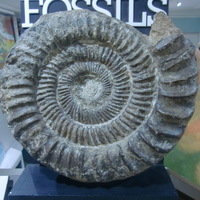

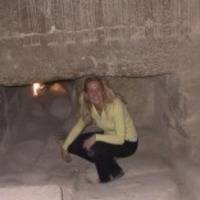
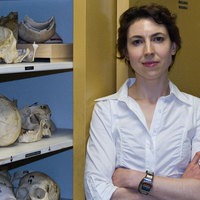


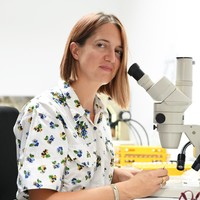


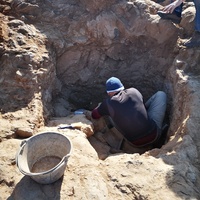
Uploads
Presentations by Meadow Campbell
Thesis Chapters by Meadow Campbell
Papers by Meadow Campbell
1Basic Science, Logan College of Chiropractic, 2Center for Archaeological Investigations, Southern Illinois University Carbondale
Burial Patterning and Biological Distance at the Black Earth Site (11-Sa-87): Implications for Understanding Cemetery Development During the late Middle Archaic
The Black Earth Site (11-Sa-87) in Saline County, Illinois is an important bioarchaeological resource with a significant late Middle Archaic component. The site’s large cemetery presents a unique opportunity to explore how early populations in the Mid-South interacted with the landscape to construct ritual space. The site represents a semi-permanent occupation of the Saline Valley used by small groups during seasonal aggregations. It is unclear whether the people who inhabited the Black Earth Site maintained a permanent cemetery with kin buried in proximity to one another, or if the cemetery represents a random assortment of burials placed as groups returned to the location periodically. To examine potential clustering of kin groups within the cemetery, we compared burial proximity to biological distance to determine if like individuals were found within the same areas of the cemetery. Burial proximity was quantified by calculating the Euclidean dista nce between burials from coordinates captured in QGIS. The Mahalanobis D calculation based on both dental and cranial traits was employed as our measure of biological distance. The two distance matrices were compared using the Mantel test. Our results indicate that no significant correlation exists between biological distance and burial proximity. While recognizing the limitations inherent in attempting to identify kin groups using skeletal data, we suggest the results are consistent with what would be expected at a site that was seasonally occupied without the maintenance of formal cemetery boundaries.